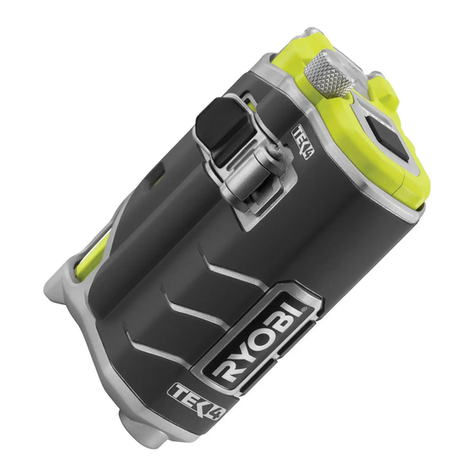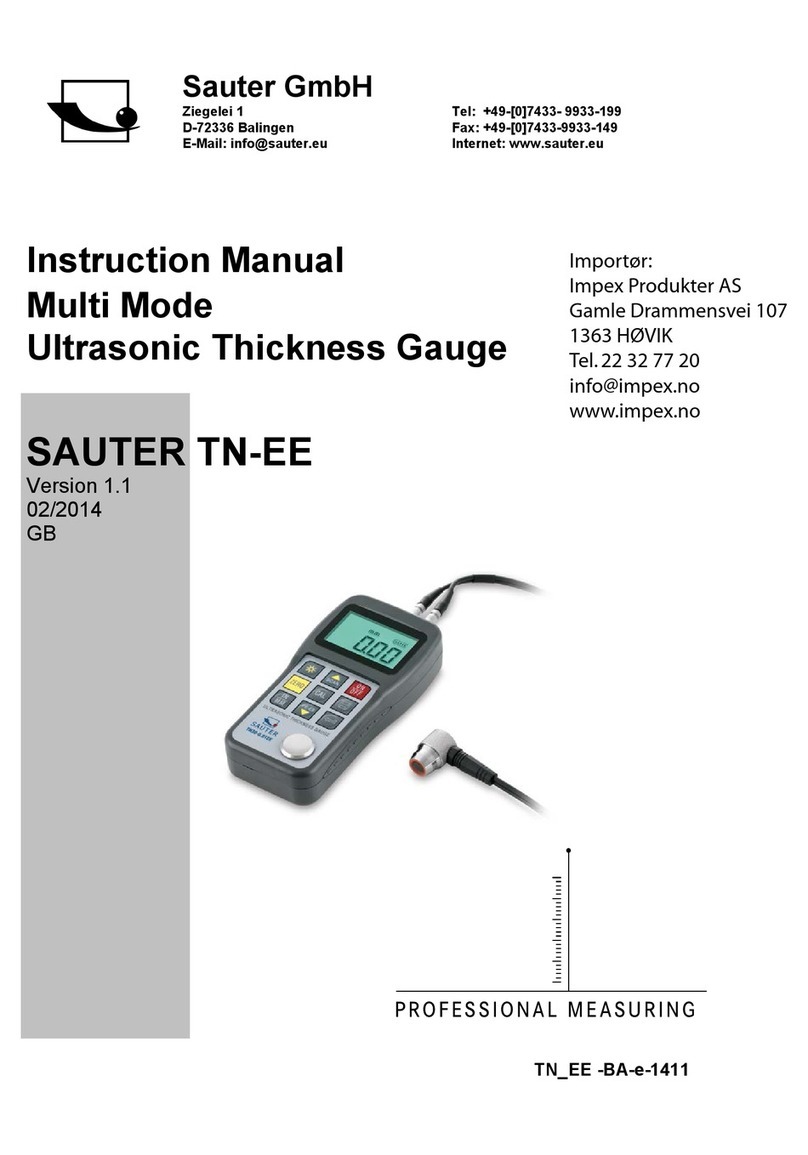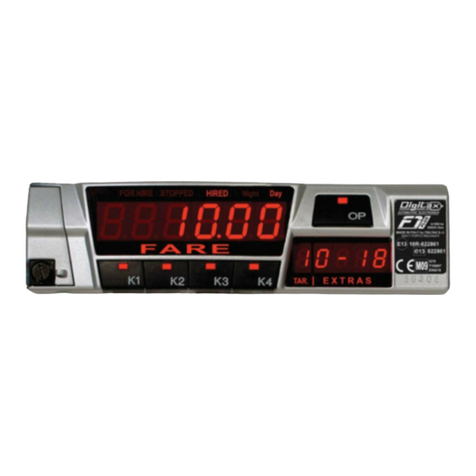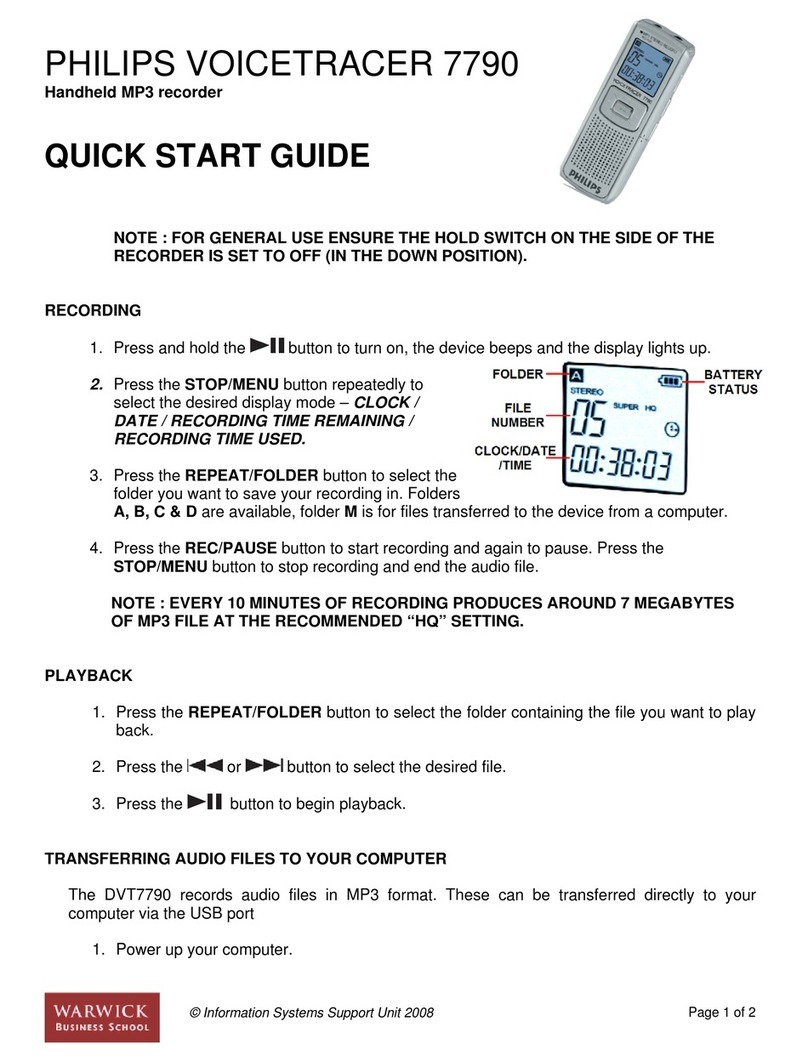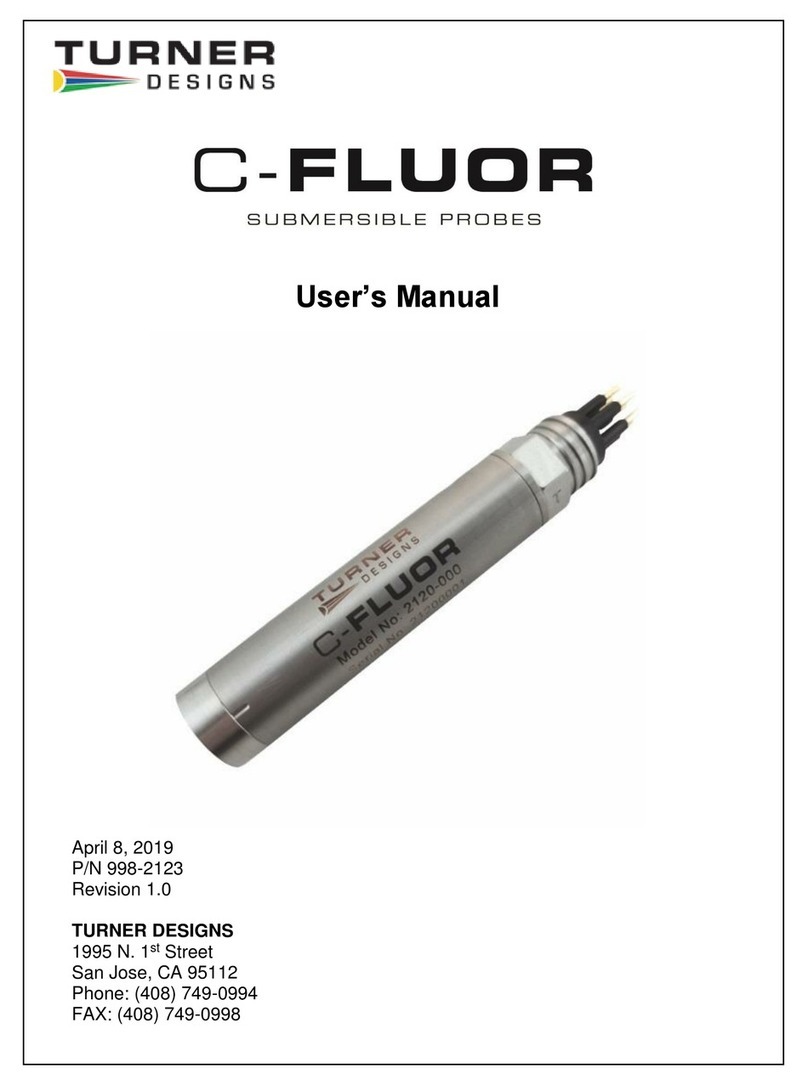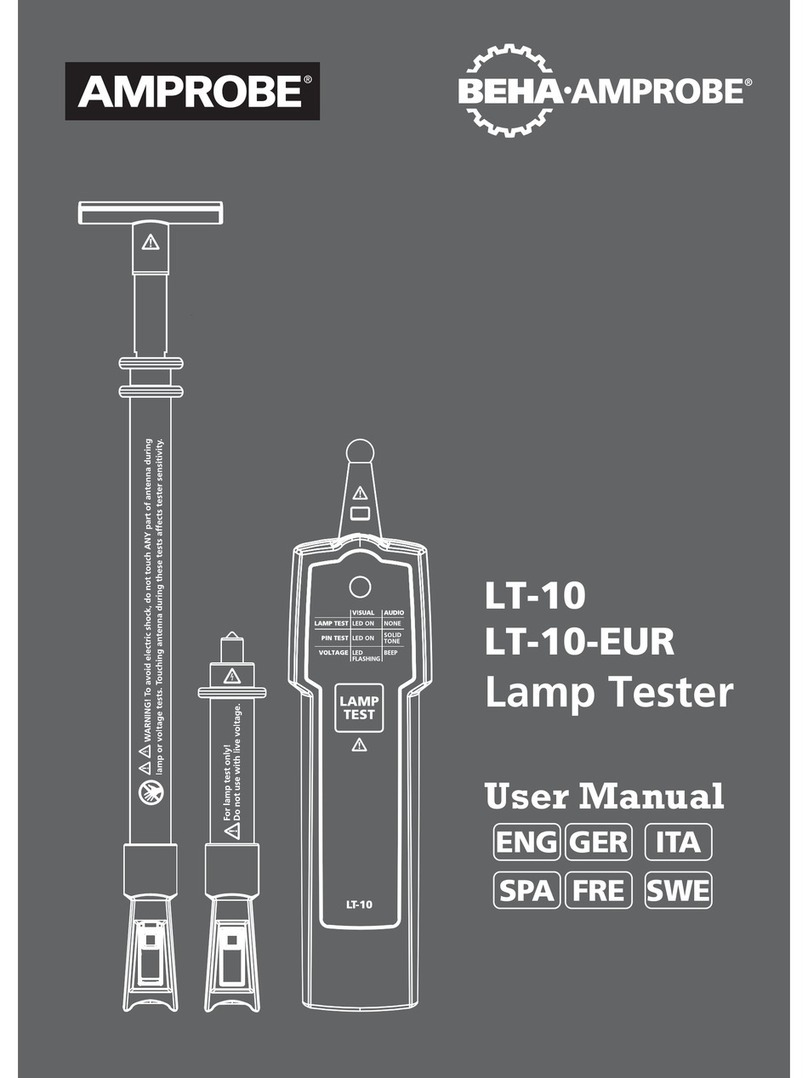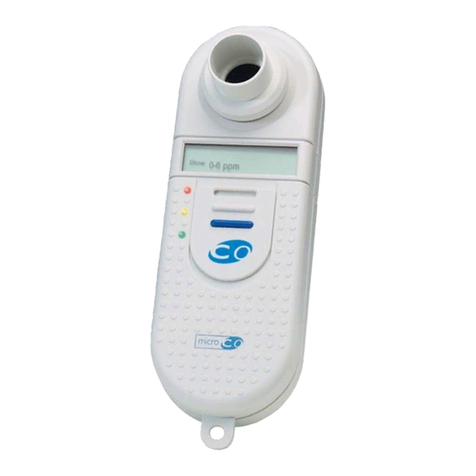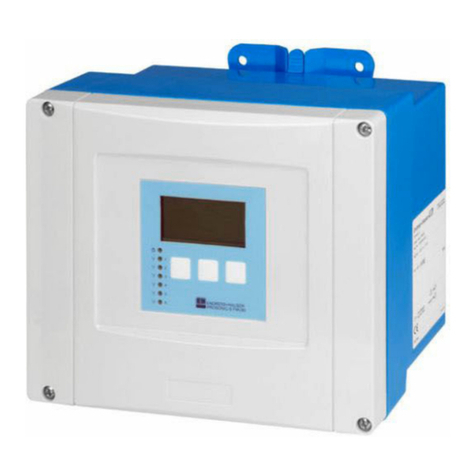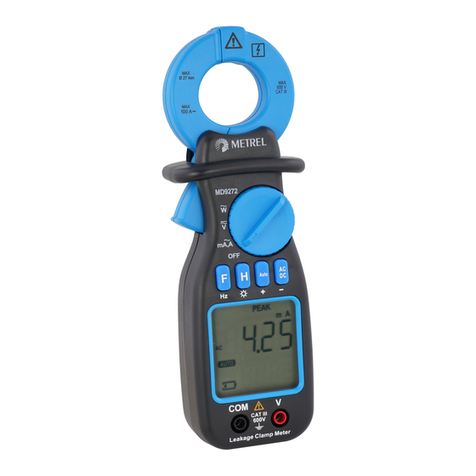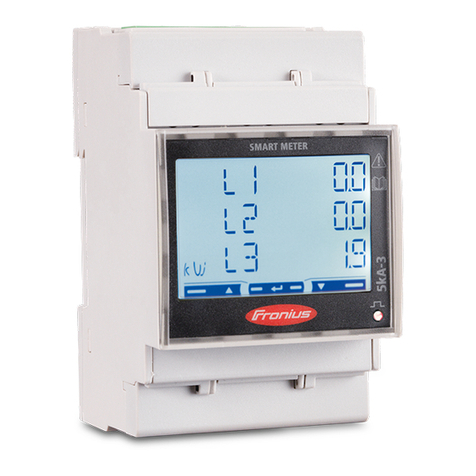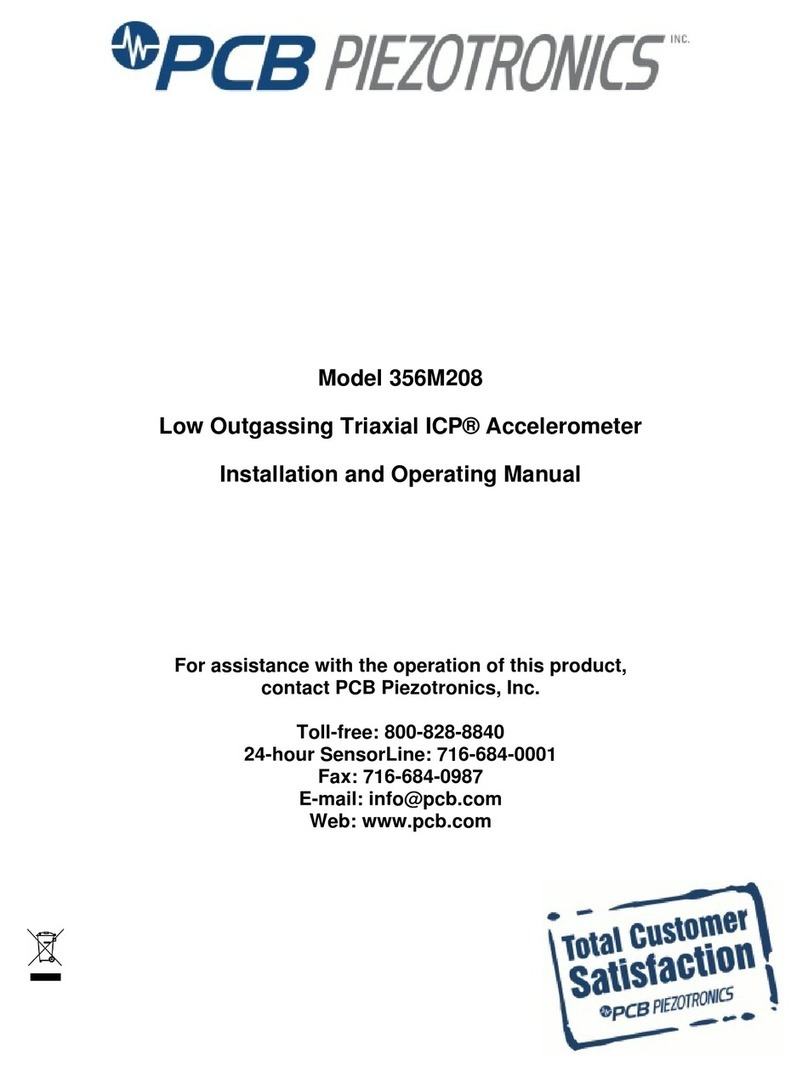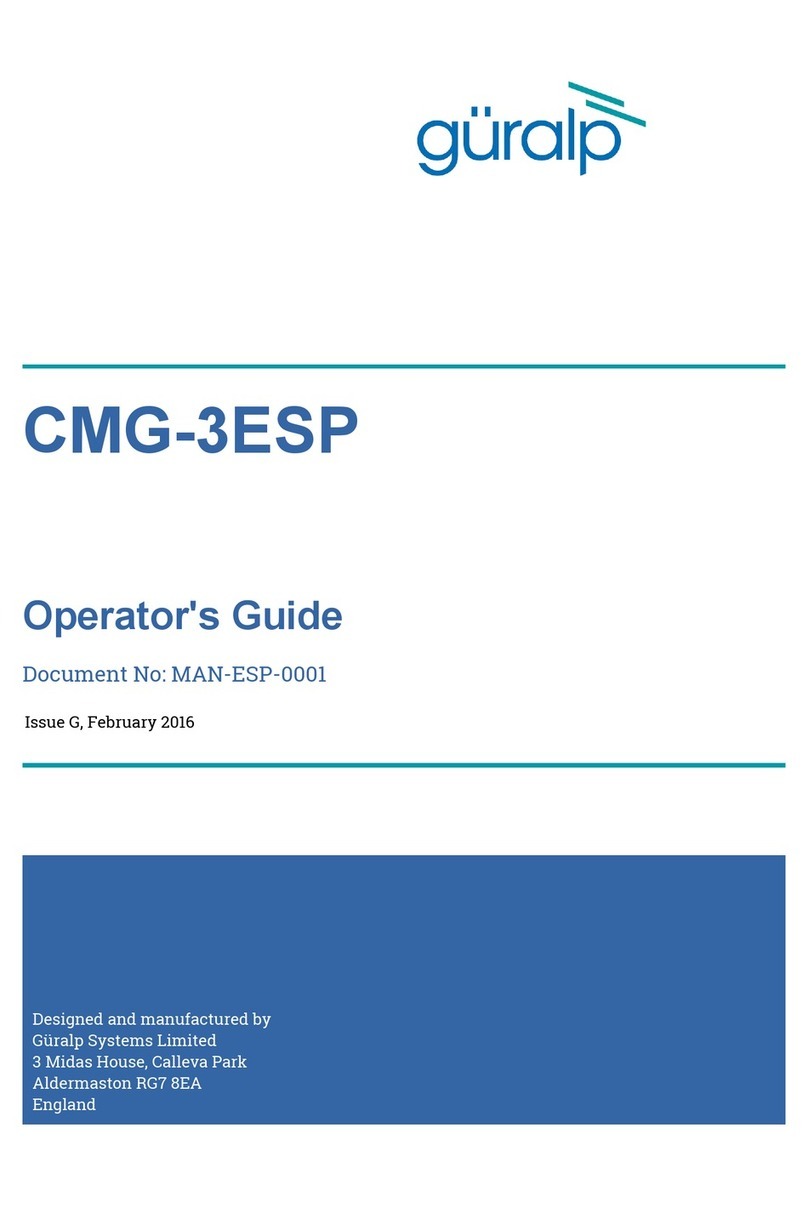Topward TMV-360 User manual

INSTRUCTION
MANUAL
AC MILLIVOLT
METER
MODEL:TMV-
360/380/381
/381 R

TABLE
of
CONTENTS
General
•••
Features
••
Specifications.
Circuit
Description
•••
Block
Diagram
•••••
•
•••
Functional
Controls.
Operation
••••
Applications.
Maintenance
••
Alignment....
•
•••••
Cautions
For
Use
••
Component
Layout
• •
Circuit
Diagram
•••
.•.. 2
4
7
• 11
.1
2
•••••
1 5
•
•••••.
1 9
• 2 4
• 2 5
•
••
2 8
•
•••
• • • • 2 9
• 3 0

TIYIV-360
TMV-380
TMV-381

GENERAT
TOPWARD'S
Model
TMV-380, TMV-381
and
TMV-381R
are
dual-channel
electronic
voltmeter
sets
having
two
independent
AC
voltmeters
in
a
single
cabinet.
Two-
pointer
meter
allows
easy
dual
measurem
ents
and
inter-channel
comparisons.
They
also
are
wideband,
super
high
sensiti
ve
voltmete
r
for
use
anywhere
voltage
measurements
are
made.
The
easy-to-
use
vo
lt
met
er
provides
frequency
response
as
wide
as
5Hz
to
1
MHz,
measura
ble
ra
ng
e
from
0.3mV
to
100V,
(1
mV
to
300V
for
TMV-380)
and
input
impedance
of
10
M The
optional
remote
control
feature
is
convenient
for
measure
ment
in
pr
oducti
on
lin
es.
The
Model
TMV-381R
range
indicator
lamp
is
prepared
on t he
top
side
of
pointer
meter
and
remote
control
of
range
sw
itc
hing
is
ava
ila
be
to
check
input
range.
dual
the
TMV-381R
is
attached
line
decorder
and
the
m
eas
u
ri
ng
range
can
be
remotely
controlled
by
ACS-017.
This
manual
was
prepared
in
common
to
fo
ur
v
ersions,
major
differences
of
which
are
as
follows,
TMV-381, TMV-381R 300uV maximum
sensitivity.
TMV-380, TMV-360
1mV
maximum
sensitivity.
(T
MV
-360
single
channel
only)
- 1 -

FEATURES
A.
All
solid
state
circuitries
provide
high
stability,
rather
short
warm-up
time,
and
low
power
consumption.
B.
Two
power
source
circuits,
positive
and
negative,
are
provided
for
very
stable
DC
bias
and
recover
from
any
overload
in
a
very
short
time.
C.
Small-sized
compact
construction
is
easy
to
carry
and
large-sized
two-
pointer
meter
is
easy
to
read
.
0.
Two-color,
four-scale
dial
plate
and
red
and
black
pointers
allow
quick,
and
accurate
voltage
reading.
E.
Number
of
adjusting
trimmers
are
minimized
precisely
calculated
in
open
loop
gains
and
are
metalfilm
resistors
as
accurate
as
1%
with
amplifiers
that
are
negative
feedbacked
th
rough
A
mplifier
characteristics
therefore
are
free
from
secu
lar
cha
nge.
F.
Input
impedance
is
as
h
igh
as
10
MD
on
all
ranges
and
it
s
parallel
capacitance
less
than
45
pF.
G.
Indirect
attenuator
switching
by
relay
and
FET
(
field-ef
fect
transistor
)
sw
itch
provides
higher
reliability,signal-to-noise
ratio,
and
inter-channel
- 2 -

crosstalk
than
most
previous
direct
method
of
rotary
switch.
H.
Remote
range
selection
is
possible
in
a
simple
way
that
optional
remote
control
unit
"ACS-017"
can
be
connected
to
TMV-381R,
since
is
attached
remote
function.
I.
Two
channel
ranga
setting
can
be
made
either
individually
or
together
(in
interlocked
manner).
J.
A
ground
mode
selector
may
float
measuring
circuit
above
ground.
- 3 -

SPECIFICATIONS
Values
brackets
(
l'letar
Section
Measurable
voltages:
Error:
dB:
dBm:
Frequency
response:
Input
impedance:
Durable
input
voltage
:
Stability:
are
for
the
TMV-380, TMV-360
version
0.3mV-100V
in
12
ranges:
0.3mV,
1mV,
3mV,
10mV, 30mV,
100mV,
0.3V,
1V, 3V, 10V,
30V
and
100V
full
scales.
(1mV-300V
in
12
ranges:
1mV,
3mV,
10mV, 30mV, 100mV,
300mV, 1
V,
3V, 1
OV,
30V, 1
OOV
and
300V
full
scales.)
-90-
+40dB (
DdB=
1
V).
-90
,._
+42dBm (
-90
-+46dBm) (
Od8m=1
mW,
600.0.).
Within+-
3%
of
full
scale
at
1kHz.
+-
10%
at
5Hz-
1MHz,
+-
5%
at
1
DHz-
500kHz
and
+-
3%
at
20Hz-
200kHz
as
+-
2%
at
30Hz--...
1OOkHz
referenceed
to
1kHz
response.
10Mn
+-5%,
with
less
than
45pF
parallel
capacitance.
500V
(DC
+
AC
peak
)
100V
peak
(DC+AC
peak)
up
to
-1DdB.
·
Within
+-0.5%
of
full
scale
for
+-10%
line
voltage
fluctuation.
- 4 -

Temperature
coefficient:
Residual
voltage
Operating
temperature:
Relative
humidity:
Crosstalk,
Individual:
Interlock:
+-0.08~/°C.
less
than
30uV
at
shorted
inputon
TMV-381,
100uV on TMV-360
and
380.
o
~50°C'.
80~.
Less
than
-BOdS
with
other
input
terminated
with
600D.
Less
than
-SOdB
with
other
input
terminated
with
600.0.
Residual
noise:
Less
than
30uV
with
input
shorted
on
0.3mV
range.
Amplifier
Section
Gain:
Output
voltage:
Output
impedance:
Distortion:
Signal-to-noise
ratio:
Frequency
response:
Power
Supply
Section
Line
voltage:
Power
consumption:
Accessory
Approx.
?OdB.
1Vrms
+-10~.
soon
+-1
o~
.
Less
than
1%
at
full
scale.
(Rated
by
signal-to-noise
ratio
in
0.3mV.
1mV
and
1V (
1mV
3mV
and
3 V )
ranges.)
Over
40dB
at
full
scale.
(Over
30dB
at
0.3mV (
1mV
)
range)
Wethin
+-3d8
at
5Hz-
500kHz.
115V,230V
AC
+-10%,
50/60Hz
.
Approx.
1
OW
TMV-360
ACS-001x1,
TMV-380
ACS-001x2,
JMV-381
ACS-003x2.
- 5 -

Dlimensions~
12S(138)W
X
190{21~)H
X 238(268)Dmm.
Values
in
( )
include
protrusions.
Net
weight:
Jkg.
Accessories
Power
cable:
1
pc.
Input
cable:
BNC
cord,
2
pes.
Instruction
manual:
1
copy.
- 6 -

CIRCUIT
DESCRIPTION
In
studying
Figure
1.
the
the
operation
of
each
circuit
in
voltmeter
please
refer
"Block
Diagram
"•
and
the
Schematic
Diagram
on
the
back.
Outline
of
Operation
to
A
signal
voltage
to
be
measured.
which
is
input
from
the
INPUT
connector.
is
passed
through
the
First
Attenuator
and
is
converted
to
a
low
impedance
by
the
lmpedance
Converter.
The
impedance-conv~rted
signal
is
normalized.
or
further
attenuated
in
proportion
to
1 Vrms
fullscale
value
through
the
Second
and
Third
Attenuator.
The
normalized
signal
is
magnified
20-fold
by
the
Main
Amplifier
and
is
fed
to
the
Output
Amplifier
and
the
Absolute-Mea
n
Value
Detctor.
The
Output
Amplifier
magnifies
the
signal
50-fold
and
feeds
to
the
OUTPUT
connector.
The
Absolute-Mean
Value
Detector
converts
the
signal
from
the
Main
Amplifier
to
DC
current
in
proportion
to
the
absolutemean
value.
The
converted
signal
activates
the
Meter.
The
Attenuator
Control
encodes
the
signal
led
fro
m
the
R
ANGE
selector
to
generate
an
Attenuator
Control
s
ignal.
This
signal
controls
the
First.
Second.
and
Third
Attenuators
to
set
the
sensitivity
corresponding
to
each
range.
The
Power
Supply
feeds
to
the
functional
circuits
+-5
V
DC
voltages
stabilized
by
its
IC
regulator.
- 7 -

ascription
of
Functional
Circuits
1.
First
Attenuator
A
resistance
divider
attenuator.
The
amount
of
attenuation
is
switched
in
two s
teps
by
relay
contacts:
OdB
and
-60dB.
2.
Impedance
Converter
A
three-fold
no-phase-inverison
amplifier
having
a
FET
differential
input.
This
converts
the
First
Attenuator
output
signal
to
a
suffi
c
iently
low
impe
d
ance
and
feeds
to
the
Sec
ond
Attenuator.
3.
Second
Attenuator
A
resistance
divider
attenuator.
The amount of
attenuation
is
switched
in
two
steps
by
rela
y
contacts
: O
dB
and
-30
dB
.
4.
Third
Attenuator
A
resistance
divider
attenuator.
four
steps
by
a
FET
switch:
0
dB,
-10
The
amount
of
attenuation
is
s
witched
in
dB,
-20
dB,
and
-30
dB.
5.
~aln
Amplifier
A
wideband,
non-phase-inversion
amplifier
hav
i ng a
This
has
high
input
impedance,
low
output
impedance,
and
output
signal
level
is
20
mVrm
s
for
the
fullscale
read
on
- 8 -
differential
20-fold
gain.
the
Meter.
input.
This

6.
Output
Amplifier
A wi
deband,
non-phase-inversion
amplifier
with
a
diff
erential
input
.
Thi
s
wo
r
ks
stabl
y
even
for
capac
itive
loads.
The
gain
i s
50
-
fold
and
the
out
put
impe
dance
600D
The
output
signal
level
is
1 Vrms
for
the
fullscale
read
·
on
the
Meter.
7.
Absolute-~ean
Value
Detector
An
absolute-mean
value
detector
comprised
of
a
high
t h
rough-rate,
high
gain
amplifier
with
a
differential
input.
This
has
a
~
er
y
good
l i
nearity
as
negative
feed
back
by
the
voltage
detected
from
the
current
flow
in
g
through
the
Mete
r
load.
In
switching,
thi
s
provides
a
sufficiently
wi
de
freq
u
ency
band
so
that
the
high
frequenc
y
pa
hse
compensatio
n
circuit
is
reset.
B.
Attenuator
Control
A
logic
control
circuit
comprised
of
a
diode
matri
x
and
outpu
t
buffer
transistors.
This
encode
s a
12-bit
sign
al
from
the
RAN
GE
selector
switc
h
to
6-
bit
signals,
which
c
ontrol
the
Fi
r s
t,
Second,
and T
hird
Attenuat
ors.
The
rem
ote
control
ca
nne
ctor
is
con
necte
d
to
th
i s
circuit
.
9.
Power
Supply
A
power
source
of
converting
the
AC
input
to
+-SV
DC
outp
u
ts
to
suppl
y.
Thi
s
has
a s
ilicon
diode
bridge
for
full-wave
r
ectificatio
n,
high
- c
apacita
nce
electrolytic
capacitors
for
smoothing,
and
an
I C
re
gulator
stab
ilizatio
n .
- 9 -

1
0.
RANGE-CH1
& 2
Selector
A 12
-c
o
ntact
rotary
switch
f
or
setting
a
desired
channel
1
and
2
measurable
voltage
range.
This
fee
ds
a
signal
corre
s
ponding
to
the
range
into
the
Attenuato
r
Control
.
11.
RANGE-CH
2
Selector
(Below
descri
ption
are
in
TMV
-380,
TMV-381
only)
A
12-contact
rotary
s
witch
for
sett
ing
a
desired
channel
2
measurable
voltage
range.
T
hi
s
feeds
a
sig
nal
c
orre
sponding
to
th
e
rangQ
into
the
Attenuator
Control.
12.
CH2
SELECTOR
Switch
A
selector
which
is
used
to
select
either
individual
or
interlocked
range
setting
of
channels
1
and
2.
This
selector,
when
set
on
the
individual
side
(right
position),
allow
s
the
RANGE-CH2
selector
11
to
set
a
channel
2
range
independently.
At
the
left
p
ositio
n
(interlock
s
ide)
,
the
RANGE-CH1
& 2
selector
10
ca~
set
both
channel
1
and
2
ranges
at
a
time.
13.
GNO
~ODE
Switch
A
switch
which
is
used
to
disconnect
the
input
negative
circuits
from
the
casing
ground.
The
switch,
when
in
the
GND
position,
connects
both
channel
1
and
2
negative
leads
to
the
grounding
pas~
(casing).
At
the
OPEN
position,
the
input
negative
connectors
are
floated
off
ground.
This
allows
grounding
on
the
signal
source
side.
-
10
-

BLOCK
DIAGRAM
O~EN
CN
I"
+
(.1
H
~-
-
---
._____.
_-r-
--+,
= G
"''
O
Figure
1
Block
Diagram
11

FUNCTIONAL
CONTROLS
........-,
T
OPW
ARO ELECTR
IC
INSTIWMlfrlTS CO.
LTO
.
..
..
2 CHAN
NEL
AC VOLT METER
MOO
E'-'T
MV·
311
-
0~
0
0
l:. .1
..
.
•.
i.·
..
.
..
~
·!:
"!:
.:.
. ..
\-1'--
-
../
•
.J
'!'
•v•
cno
•
"~
t••c:;
c::
=
~
.
~:;
-=.'
.'
-::-.·
L-----
------
i===
==
======~~
Figure
2 -
Front
Panel
View
0 0
Figure
J -
Rear
Panel
View
-
12
-

Front
panel
(see
Figure
2)
1.
Power
on
indicator
(LED).
2.
POWER
-
Power
on-off
switch.
3.
RANGE-CH1
& 2 -
Channel
1
and
2
attenuator
selector.
4.
INPUT
1 -
Channel
1
input
connector.
5.
CH2
SELECTOR
-
Individual-interlock
range
setting
selector.
6.
INPUT
2 -
Channel
2
input
connector.
7.
RANGE-CH2
-
Channel
2
attenuator
selector.
8.
GND
~ODE
-
Negative
input
f~oating
switch.
9.
Dual-pointer
meter.
Rear
panel
(see
Figure
3)
10.
GND
-
Casing
grounding
pos
t.
11.
OUTPUT-2-
Channel
2
monitor
output
co
nnector
.
-
13
-

12.
Line
voltage
selector.
13.
Power
cable
connector.
14.
Fuse
holder.
15.
OUTPUT-1
-
Channel
1
monitor
output
connector.
16.
CONT-INPUT
-TMV-380,
TMV-381
types
Remote
control
mouriting
hole.
TMV-380R
types
connector
for
Remote
control.
23.
Range
indicator
lamp (TMV-381R
only).
-14 -

OPERATION
Set-up
Values
in
brackets
(
1.
Press
the
POWER
emitting
diode,
will
j
are
for
the
TMV-380, TMV-360
version
.
pushswitch
2
in.
The
Power-on
indicator
1,
light,
indicating
that
power
has
been
applied.
a
light-
2.
Plug
the
signal
calbes
into
the
INPUT
1
and
2
connectors
4
and
6.
3.
Set
the
CH2
SELECTOR
switch
5
to
the
i n
di
v
idual
side
(right
position).
4.
Set
the
RANGE-CH
1 & 2
selector
3
and
the
RANGE-CH2
selector
7
to
"100V
[300V]".
To
measure
an
AC
voltage
superimposed
on a
DC
voltage,
be
sure
to
set
the
selectors
to
the
positions
before
connectin
g
the
cables
to
points
to
be
measured.
Otherwise,
the
DC
voltage
causes
a
high
surge,
which
could
burn
voltmeter.
5.
Set
the
GNO
~ODE
selector
8
to
"GND"
(right
position).
6.
Connect
the
cables
to
points
to
be
measure.
7.
Turn
the
selectors
3
and
7
for
proper
ranges
until
each
Meter
pointer
switngs
over
one
third
of
the
fullscale.
B. Read
the
Meter.
- 1 5 -

(1).
Voltage
Scales
There
are
two
black
voltage
scales:
a
scale
A
graduated
0
to
10
and
a
scale
B 0
to
3.
When
the
RANGE
se
l
ector
3
is
at
"1
V",
for
ex
ample
,
the
division
10
on
the
scale
A
indicates
1
V.
At
the
"300mV"
posi
ti
on,
the
division
3 on
the
scale
B
indicates
300mV. Si
milarly,
the
other
RANGE
selecto
r
positions
show
their
full
scale
values.
(2)
.
dB
Scale
In
general,
the
dB
values
are
ex
pressed
in
dB
V wh
ich
is
a
unit
referenced
by 0
dB
equal
to
1
V.
(Note
that
the
TMV-380, TM
V-360
version
has
no
dB
scale.
) The
division
10
at
the
scale
A
corre
spo
nd
s t o 0
dB
on
the
red
dB
scale,
which
is
a
voltage
ratio
sc
ale.
Sinc
e
the
RANGE
se
lector
has
12
range
positions
in
steps
of
10
dB,
the
voltage
ratio
of 0.3mV
to
100
V
is
110
dB
attenuation.
Assume a
reference
voltage
level
on
th
e
scale
A
be
1 V
with
the
RANGE
selector
at
"1
V",
a
given
voltage
c
an
be
rea
d
as
low
as
-70
dB
(0.3mV)
by
t u
rning
the
selector
downward.
Fu
rther,
as
t he
sc
ale
A
allows
reading
to
-
20
dB
(0.03mV ) , you
can
conti
n
uously
measure
the
v
oltage
ratio
as
high
as
-90
dB
(0.03m
V
to
1 V) . The
read
of
-90
dB
means a
si
gna
l-to-nois
e
ratio
of
around
10
dB.
Al
so
,
the
dB
s
cale
allows
continuou
s m
ea
su
ri
ng up
to
+40 dB
(1
to
100
V)
by
turing
the
selector
upward.
(3).
dBm
Scale
In
general,
voltmeters
have
a
re
f
eren
ce
le
v
el
division
of
0
dBm
equal
to
-
16
-

0.775
V
(1mW
power)
induced
across
a
600n
resistance
load
,
Therefore,
the
red
dBm
scale
is
available
to
measure
a
power
level
referenced
to
0 dBm,
with
the
impedance
of
the
g1ven
power
circuit
b
eing
600fi
pure
resistance.
Where
measured
across
specific
resistance
loads,
for
example,
10kil
other
than
the
600fi
load,
the
levels
are
sometimes
expressed
in
dBs.
How
to
Use
Remote
Control
Availability
of
the
optional
Remote
Control
is
one
of
outstanding
features
of
Voltmeters.
T~V-3B1R
:
To
attach
the
Remot~
Control,
remove
the
blind
plate
at
the
rear
of
voltmeter.
Install
and
plug
the
optional
conn
ec
t
or
into
the
16-
pin
connector
on
the
PC
board.
Wire
it
to
the
multi
-
pin
connector
(plug)
supplied
with
the
option.
Also,
wire
its
pins
to
a
RANGE
pushs
w
itch
or
rotary
switch
and
to
a
PANEL-REMOTE
switch
and
individual-i
nt
er
lock
s w
itch
(toggle
switch,
pushswitch
or
slide
switch).
These
switches
allows
you
to
change
the
measuring
voltage
range
on
your
voltmeter
from
a
distance
place.
T~V-3B1R
type:
The
measuring
range
of
TMV-381R
can
be
remetely
coutrolled
by
ACS-017(option
) . The
outputs
of
remote
cantrall
c
onn
ector
16
are
as
table
1
and
the
input
and
output
or
each
range
are
as
tabel
2.
-
17
-
This manual suits for next models
3
Table of contents
![Lambrecht sun[e] 00.16130.501030 manual Lambrecht sun[e] 00.16130.501030 manual](/data/manuals/t9/m/t9m8/sources/lambrecht-sun-e-00-16130-501030-manual.jpg)
